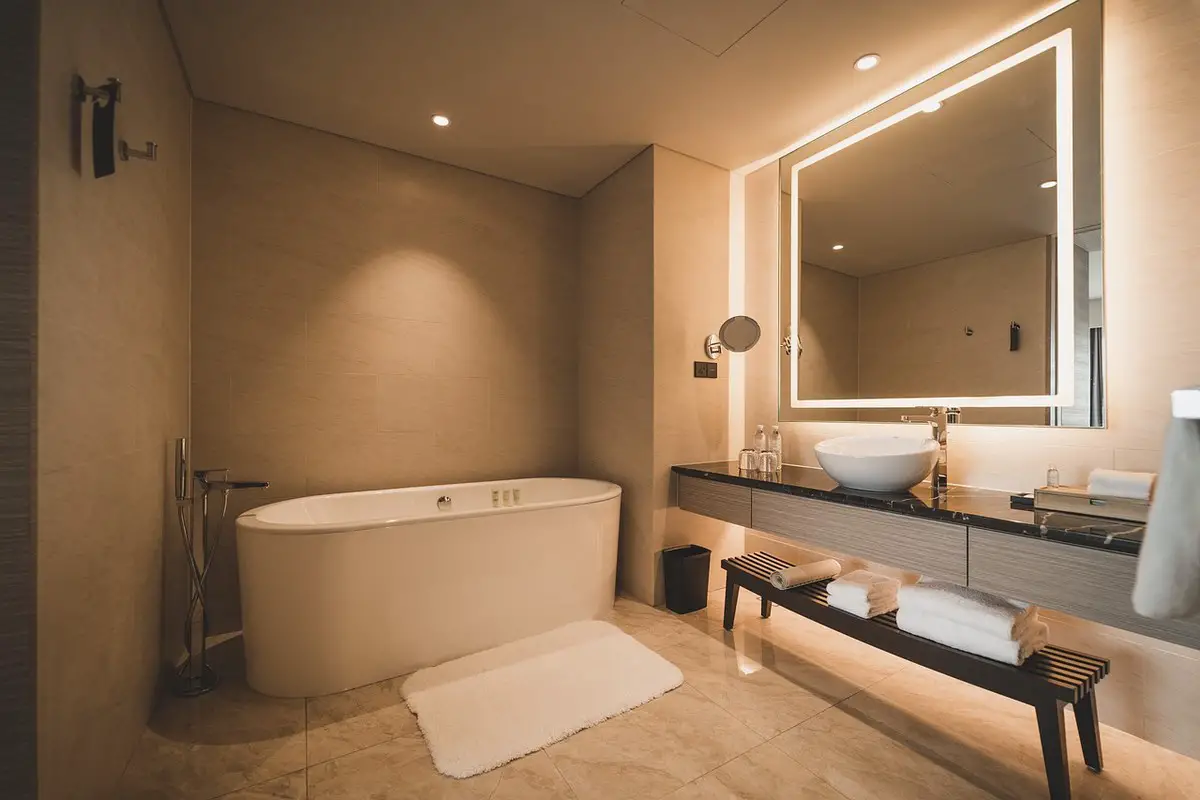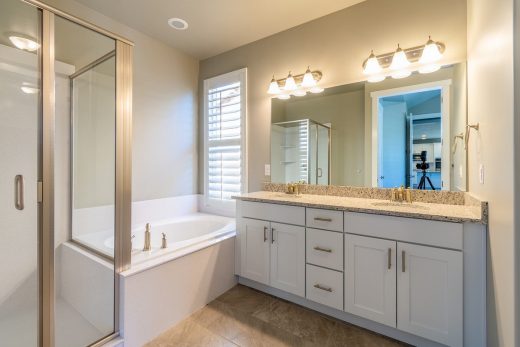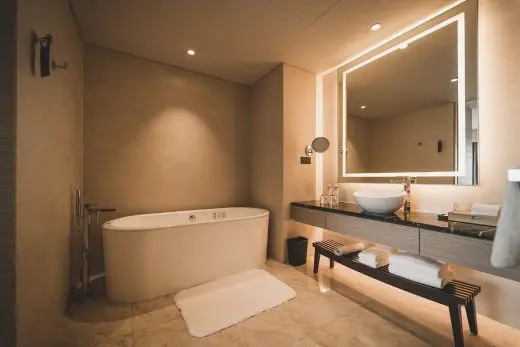Evaluating plumbing services for your home, Property eco grants, Lower bills tips, Higher EPC rating advice
Evaluating Plumbing Services through Architecture Viewpoints
8 May 2024
Have you ever tried to check out the marvel of modern architecture that sits behind and beneath your walls? It’s a little something called plumbing. With this combination of pipes, valves, fixtures, and other apparatus designed to convey fluids, our daily lives become much more comfortable and convenient.
But how can we evaluate the efficiency and effectiveness of these systems? Now take a unique perspective by looking at plumbing services through the lens of architectural viewpoints.
The Architecture of Plumbing Systems
Plumbing systems are often overlooked when it comes to architectural design. Most think only of the visible parts — fixtures, faucets, toilets. However, much like an iceberg, most of a building’s plumbing system is hidden from view beneath floors or behind walls. Architects focus on integrating these complex pipe networks into a structure while maintaining its integrity and beauty.
The design complexity can’t be overstated. Architects need to plan for gravity-fed drainage systems while carefully considering pressure management in supply lines. This task requires an in-depth understanding not just of physics but also the principles of fluid dynamics. And don’t forget how smoothly all these must be integrated with a building’s overall design!
Architects must also consider materials used in plumbing systems. Cast iron? PVC? Copper? Each has strengths and weaknesses. You can check out some customer reviews on Product Review about Ferguson’s Plumbing to see what materials people prefer for their homes. Regardless of choice, architects focus on ensuring that these elements seamlessly dovetail with the aesthetics and function of the edifice.
When executed perfectly, it results in a quiet, efficient, trouble-free plumbing system that performs unnoticed for years—a true architectural stroke of genius.
Environmental Impacts of Plumbing Design
Each blueprint decision has environmental implications. Architects, therefore, have a significant role to play in creating sustainable plumbing systems. A thoughtfully designed system can reduce water consumption, limit energy usage, and ultimately lessen carbon footprints.
One of the significant advances toward this end is greywater recycling. This method reuses lightly contaminated water from baths, sinks, or washing machines for toilet flushing or landscaping needs. Architecturally, this requires careful planning and innovative design to integrate separate plumbing lines for potable and greywater into the building structure.
An architect may also turn to rainwater harvesting designs. When properly filtered and treated, rainwater can serve various non-potable functions. Architecturally, this can mean integrating rain barrels or cisterns into external building designs or roofing systems which can help save both valuable resources and trim down your bills.
Last but not least are water-efficient fixtures that significantly contribute to reducing a building’s overall environmental impact. From low-flow faucets to dual flush toilets, these fixtures—combined with meticulous architecture—can help create greener homes and cities.
Standards and Regulations in Plumbing
In the world of plumbing as it intersects with architecture, regulations abound. For example, the International Plumbing Code (IPC) provides comprehensive regulations for all aspects of plumbing design and installation. Local ordinances may also add additional layers of compliance.
These rules and standards exist for good reasons—safety being paramount. Compliance ensures reliable performance while minimizing risks such as pipe leakage or wastewater contamination.
Architects play an essential role in meeting these standards. From following minimum pipe diameters to maximum allowed pressure ratings depending on materials used, architects must meticulously navigate through these regulations when designing a structure’s plumbing system.
Besides safety and reliability, complying with codes can also have a substantial impact on the long-term maintainability and upgradability of the plumbing systems, making compliance an essential metric for evaluating plumbing services.
Efficiency of Plumbing Systems in Architecture
A well-designed, well-implemented plumbing system is an indisputable boon from an architectural standpoint. But how does such a system reflect efficiency?
The first aspect lies in its seamless integration into the building’s structure. This reduces potential disruptions during repairs or future upgrades — hence lowering lifetime costs for owners.
Eco-efficiency holds equal importance in today’s green-obsessed world. An architecturally integrated system that incorporates water-conserving fixtures, greywater recycling, or rainwater harvesting demonstrates a commitment to sustainability.
Lastly, regulatory compliance underpins efficiency. Professionals on this platform adhere to codes which ensure optimal performance while providing peace of mind concerning health and safety issues.
Efficiencies found in a building’s plumbing architecture go beyond the typical metrics. They dive deeper into design effectiveness, integration aptitude, and future-proofing for ultimate long-term savings.
Modern Trends in Plumbing Architecture
The dynamic field of architecture continues evolving, and so does its perspective on plumbing services. New trends have emerged, clustering around technological advancements and sustainability.
The Rise of Smart Plumbing
Remember Google Home or Alexa? The Internet of Things has finally arrived at your bathroom’s doorstep. With sensors implanted, smart faucets, showers and toilets can significantly improve water efficiency by monitoring consumption and flagging leaks on time to prevent architectural water damage.
Data-driven Plumbing Services
Data is truly ruling the roost—even within your walls! Numbers crunched from smart meter readings can present a detailed picture of a building’s water use patterns. In the long run, this data can serve to devise tailored water conservation strategies.
Recycled Material Use
PVC or copper? Perhaps, none! Today’s architects are exploring the use of recycled materials, imbued by the mantra ‘Reduce, Reuse, Recycle’. That’s sustainability going another notch up on your plumbing plans.
Trends may come and go. The most resilient ones, providing functional efficiency and environmental benefits, will hopefully stay etched in architectural designs for plumbing systems.
Architectural Solutions for Common Plumbing Issues
It might astonish you how architectural insights can address some common plumbing problems. Time to glance through how these puzzling issues could be prevented at their root with architectural solutions.
Got a problem with leaking pipes? It could resonate from shoddy workmanship or poor material quality. However, another hidden culprit could be excessive pressure in enclosed pipelines, often overlooked in conventional designs. Pressure reduction valves or expansion tanks—strategically planned within architecture—can mitigate such high-pressure systems.
Now shift gears to noise from rushing water—a perennial plumbing issue. Again, an architect’s ingenious placement of fixtures and careful piping layout design could curtail such noise disruptions.
From mold growth due to unwanted condensation to systemic issues like improper venting causing slow draining – intelligent architectural intervention at the stage of design development can prevent many supposedly ‘inevitable’ plumbing issues.
Future Directions in Plumbing Architecture
The need for green buildings and now ‘healthy buildings’ post-COVID-19 is reshaping plumbing architecture’s future directions.
The sphere of sustainable innovation continues to grow. Architectures are increasingly projected to include water purifiers within plumbing plans. Similarly, modern designs focusing on water conservation, greywater recycling, or solar-heating are all set to rule the titbits of architectural trends.
A changing landscape is health considerations—an urgent topic post the pandemic. Touch-free fixtures or antimicrobial copper pipes might emerge as dominant trends in ensuring healthier indoor spaces with advanced plumbing solutions.
Overall, future directions lean towards improved sustainability over the lifecycle of a building’s functionality and rigorous health practices even in the backdrops—the hidden culverts and pipelines.
To Wrap it Up
Pulling together, you find an intriguing tapestry formed by architectural insights shaped around plumbing services. Bolstered by green building demands and technological advancements, the bond is growing deeper—both in doctrine and practice.
The quiet science behind walls and beneath floors encapsulates staunch benefits when anchored by architectural viewpoints. Indeed, evaluating plumbing services through architecture heralds a systematic drill-down approach: from functionality, compliance, sustainability, costs, trends, to fascinating future possibilities.
Comments on this guide to Evaluating plumbing services for your home article are welcome.
Home Plumbing & Building Plumber Services
Common plumbing problems and how to fix them
Plumbing Emergencies Trace and Access Services Advice
Edinburgh Architecture & Innovative Plumbing
Times You Might Need an Emergency Plumber
Comments / photos for the Evaluating plumbing services for your home advice guide page welcome.






